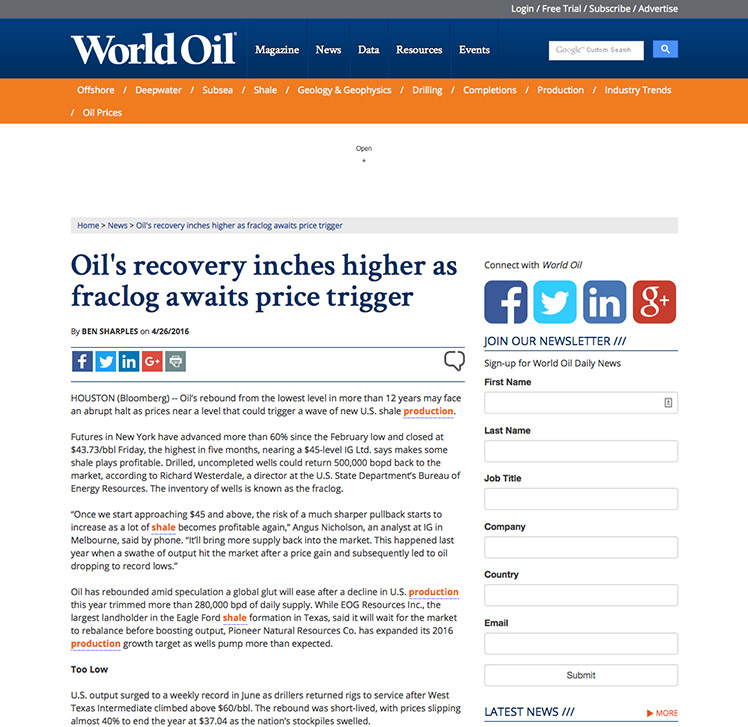India’s Fuel Markets A Lucrative Prize For Oil Majors lweb.es/f1099 7.20.16
![]() OEF REVIEW:India’s fuel markets could be a lucrative prize for the world’s oil majors as they seek outlets for their gasoline and diesel. India posted the fastest oil demand growth in the world in the first quarter of 2016 and is replacing China as the driver of growth globally, the International Energy Agency said in its latest report. Fuel marketing in India has turned profitable after the government ended decades-old control over the retail prices of gasoline and diesel, and local private oil refiners Reliance Industries and Essar Oil have started opening their mothballed fuel stations, adding new ones to expand business. India recently offered Saudi Aramco a stake in refineries and petrochemical projects; Total and Royal Dutch Shell are also keen to strengthen their presence in the fuel retailing business; BP could market jet fuel in the country; and Rosneft may take up a 49% stake in Essar Oil’s in a 49% 400,000 barrels per day Vadinar refinery in western Gujarat state.
OEF REVIEW:India’s fuel markets could be a lucrative prize for the world’s oil majors as they seek outlets for their gasoline and diesel. India posted the fastest oil demand growth in the world in the first quarter of 2016 and is replacing China as the driver of growth globally, the International Energy Agency said in its latest report. Fuel marketing in India has turned profitable after the government ended decades-old control over the retail prices of gasoline and diesel, and local private oil refiners Reliance Industries and Essar Oil have started opening their mothballed fuel stations, adding new ones to expand business. India recently offered Saudi Aramco a stake in refineries and petrochemical projects; Total and Royal Dutch Shell are also keen to strengthen their presence in the fuel retailing business; BP could market jet fuel in the country; and Rosneft may take up a 49% stake in Essar Oil’s in a 49% 400,000 barrels per day Vadinar refinery in western Gujarat state.


